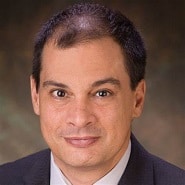The rise of remote work has made it increasingly difficult for healthcare organizations to build (and keep) strong IT teams. But by following a few best practices, including updating the technology stack and developing rounding programs, leaders can begin to foster a healthy environment – and increase their staying power, according to a panel of experts at ViVE.
“Creating a Lens”: How Organizations Are Pulling Data to Choreograph Care Across the Continuum (and Beyond)
“Trust Nothing”: Experts Share Tips on Balancing Security and Usability in a Hybrid World
Like it or not, the remote and hybrid work models that were borne out of the Covid-19 pandemic are here stay — and, consequently, so are the myriad challenges that come with safeguarding data off premise. During a recent panel discussion, Zafar Chaudry, MD, and Chris Paravate shared strategies for enabling access without compromising security.
Q&A with Northeast Georgia CIO Chris Paravate, Part 2: “We’re Completely Dependent on Digital Solutions.”
One of Chris Paravate’s core objectives? To make sure that as Northeast Georgia expands its physical footprint, “we’re not just extending what we already have in our portfolio, but really taking the opportunity to test new technologies, implement new tools, and bring them back to other existing facilities,” he said in a recent podcast interview.
Q&A with Northeast Georgia Health System CIO Chris Paravate, Part 1: “We Have to Support Operational Flow.”
Beyond Alerts: How Leaders Are Combatting “Shock and Awe” with Consistent, Solid Cybersecurity Practices
Cybersecurity leaders can leverage threat intelligence to better understand adversaries, learn from attacks, and take actions to mitigate risks. But it needs to be part of a larger strategy that includes taking care of basics and partnering with others, according to Teresa Tonthat and Chris Paravate.
Chris Paravate, CIO, Northeast Georgia Health System, Chapter 3
Chris Paravate, CIO, Northeast Georgia Health System, Chapter 2
Chris Paravate, CIO, Northeast Georgia Health System, Chapter 1






